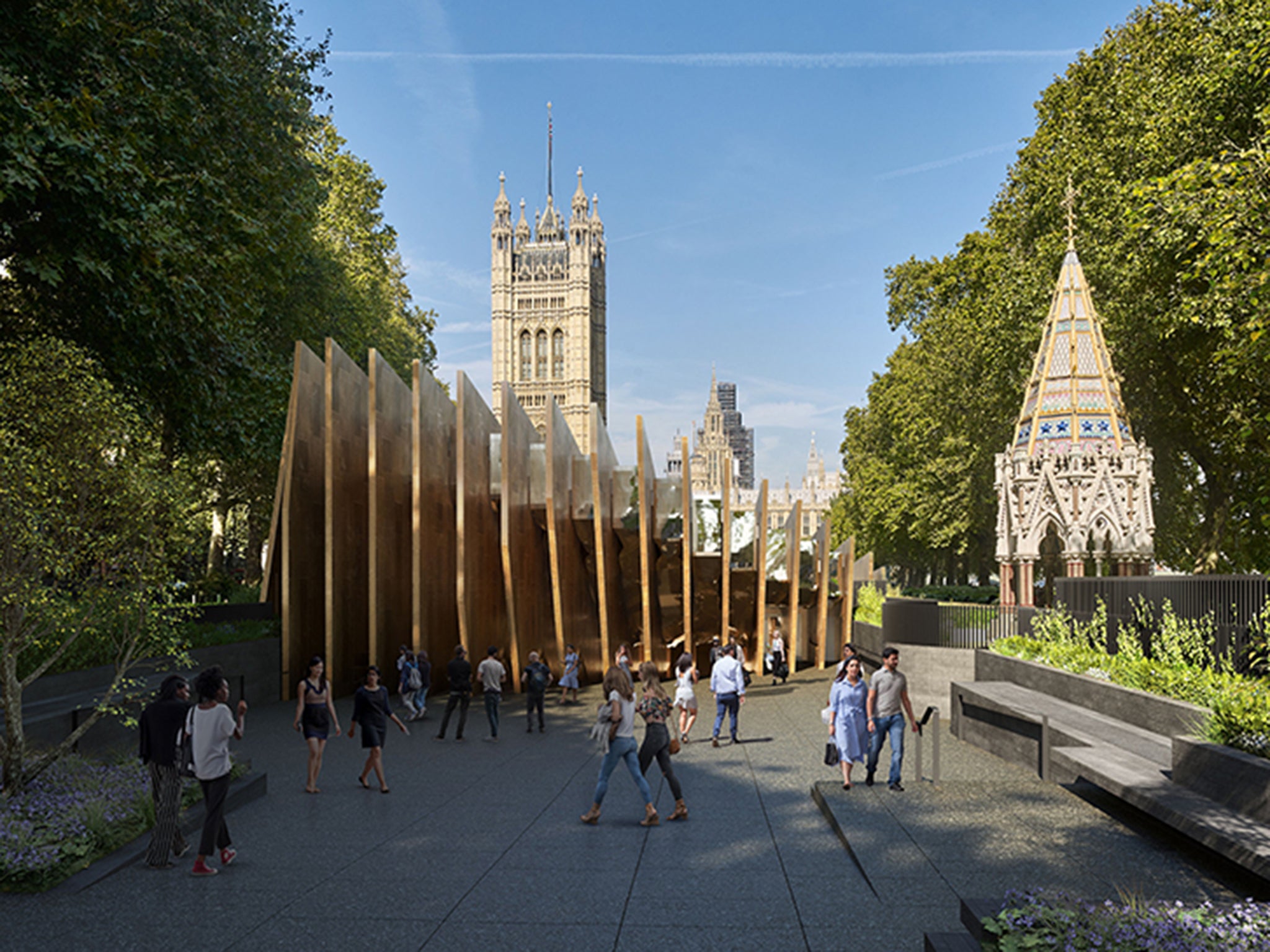Why is Britain’s national Holocaust memorial proving so contentious?
Its proposed location beside parliament has been described as a ‘trophy target’ – and for many locals, it will rob them of another green space. Mary Dejevsky reports

To someone of my – post-Second World War – generation, it is hard to imagine that a project to commemorate and teach people about the mass extermination of Jews and other minorities could be controversial in any way. One of my uncles, an Army chaplain, was in one of the first British contingents to enter the Belsen concentration camp; many others will have witnesses among their own relatives.
So how is it that, 75 years after the end of that war, plans for a national Holocaust memorial and what is described as a “learning centre” have become so contentious that they risk harming the very cause they were intended to promote?
It is a complicated saga, which begins on 16 September 2013, when the then prime minister, David Cameron, gave a speech to mark the 25th anniversary of the Holocaust Educational Trust – an admirable charity whose name explains itself. In his speech, Cameron deplored the return of anti-Semitism in some parts of Europe and stressed the need to “ensure that the memory of the Holocaust is preserved from generation to generation”.
Subscribe to Independent Premium to bookmark this article
Want to bookmark your favourite articles and stories to read or reference later? Start your Independent Premium subscription today.
Join our commenting forum
Join thought-provoking conversations, follow other Independent readers and see their replies